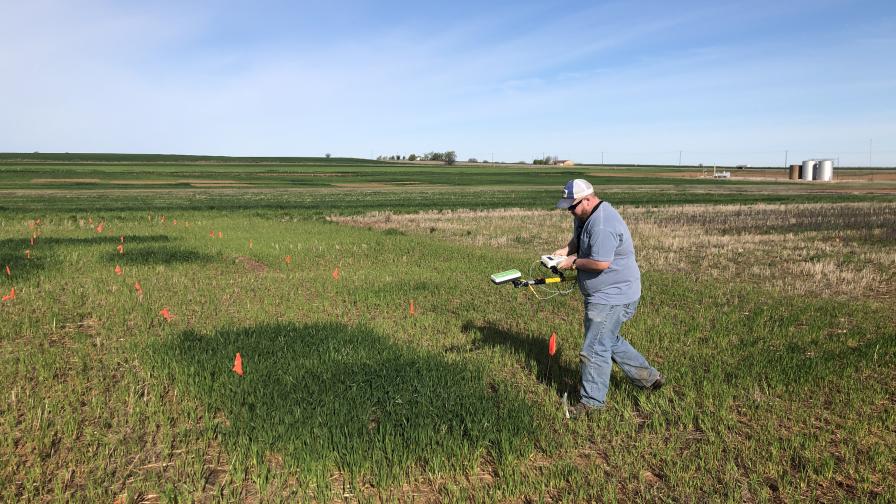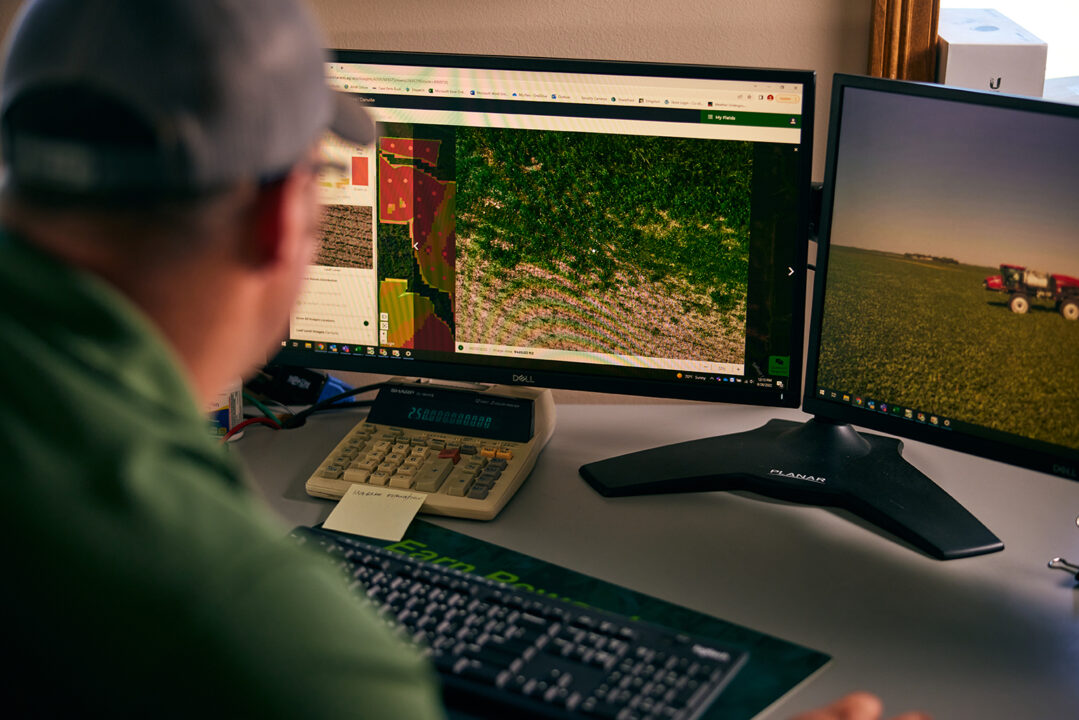Data, Technology, and In-Season Nutrient Management

Sensor data drives Oklahoma State University nutrient management strategies.
Editor’s note: This article originally appeared in March 2021.
If weather is the one in-season factor that’s completely out of control for farmers and trusted advisers, crop nutrition — in particular, nitrogen — is the controllable, reliable port in the storm.
This truth is fundamental to what most often holds back fertility-focused precision practices, which by definition requires trading at least some measure of control for recommendations through data acquisition, data aggregation, and algorithms.
Brian Arnall, who’s spent a goodly chunk of his career working on the nitrogen conundrum at Oklahoma State University, has worked to free farmers from the gravitational pull of nitrogen comfort, and for good reason.
“There are only a few things that the farmer can truly manage, and one of them is nitrogen,” says Arnall. “No matter what else happens, they have that bit of security. However, that thought approach does not make sense to society today, and the fact that it is now a societal issue and not just a farming issue means your practices have an impact beyond your operation.”
The other challenge is the hyper-regionality of nitrogen management. The sensor-centric system developed at Oklahoma State has some enthusiasts outside the region but is most intensively used where it was developed — a reality that repeats across the Midwest.
“It’s almost laughable to try to develop a one size fits all approach,” says Arnall. “Nitrogen is an environment and management specific system and it’s not easy to develop a push-button program. Could I trust the Cornell system in Oklahoma soils if it hasn’t been tested here? The models are getting better, but the data needs to be spot on. Honestly, the easy button does not exist for nitrogen.”
Still, from data-driven algorithms to sample and monitor programs, retailers and technology companies continue to build and tune their fertility regimens.
Delivering on 4R
Luckey Farmers Inc., a northwest Ohio cooperative serving farms near the western basin of Lake Erie, knows all too well the need to balance environmental concerns with the practical fertility needs of the farm fields they serve. They’ve gone all-in on 4R Nutrient Stewardship, as well as the state-level H2Ohio Program, and built technology tools around achieving compliance.
Its ERP system of choice, Agworld, has served as an effective center point for collecting and managing data and sharing information with farmers, says Andrew Gladden, IT Manager for Luckey. “It’s our recordkeeping, work order creation, and precision services program in one platform.”
Soil sampling, a core activity to the 4R approach, is initiated and tracked through the system as well. Other data fed into the system that goes into variable-rate prescriptions includes yield history, electrical conductivity, NDVI imagery, and when required, tissue sampling and stalk nitrate analysis.
The integration of Farmobile and Agworld is providing another important opportunity to streamline technology. Luckey has invested in Farmobile data PUCs for every machine they run, allowing not only cleaner data transfer, but also machine information that goes into improving operational efficiency that makes applicators and agronomists more efficient.
Equipment and data compatibility goes hand in hand with fertilizer program efficiency, says Joel Kaczynski, Product Specialist Manager with RDO Equipment, a John Deere dealer network. “We are seeing more use of the Deere capabilities of the system with variable rate prescription of fertilizer. For instance, with Deere getting into high-speed, high-capacity applicators and floaters, ag retailers have been able to get prescriptions to the machines more seamlessly. That’s driving more variable rate when it comes to nutrient management. It seems to be getting easier for them. The quality and accuracy of fertility work continues to improve with the use of telematics in the equipment.”
For Indiana cooperative Ceres Solutions, achieving peak efficiency can provide many benefits, including increased accuracy of application and keener attention to detail. Ceres is expanding a pilot program it started last year with software as a service provider Solinftec.
Solinftec began exploring the U.S. market in 2017 after establishing itself in Brazil to optimize application vehicle scheduling and routing. Initial pilot testing delivered significant benefits by reducing travel time over the course of a day, and increasing acres covered per machine.
“We’re using Solinftec to digitize the workflow experience,” says Drew Garretson, Ceres’ Director of Digital Experience. Its ERP program handles the annual farmer cropping plans, and once they are moved to jobs, the Solinftec system schedules everything out for all the machines for the day. Data collected provides both long- and short-term benefits — day-to-day data continuously improves the system with more experience, and overall seasonal data provides insight into overall efficiency.
Questions such as, “do we have enough or to many machines for our business?” or “can I increase our acres serviced with the same number of machines?” can be answered with more confidence.
Another interesting benefit is more predictability for applicators. The fully fleshed out schedule provides a definitive end point for the driver which, Garretson hopes, “allows these guys to get to more of their kid’s little league games.”
Micro Opportunity
Drone application service provider Rantizo has been making a splash in the Midwest by offering targeted application of crop protection products in-season. On the crop nutrition side, the commoditized nature of macronutrients doesn’t hold a lot of promise for the company’s in-season model. But targeted application of micronutrients could be a promising opportunity, says CEO and Founder Michael Ott.
“With our offering, where you get more of a delta change is with low volume, high value products, and micronutrients are a great example,” he says. “From a fertility point of view that is where we are focusing.”
One micro that’s worked well within the system is boron. “You want it applied later in the season in a small amount, and that would be value for other nutrient processing in the plant,” Ott says. Opportunities are being vetted and prioritized for other micros as well, including copper and iron. “When you can take a leaf sample and determine deficiency, and get targeted application out to the affected, that’s a pretty compelling story.”







